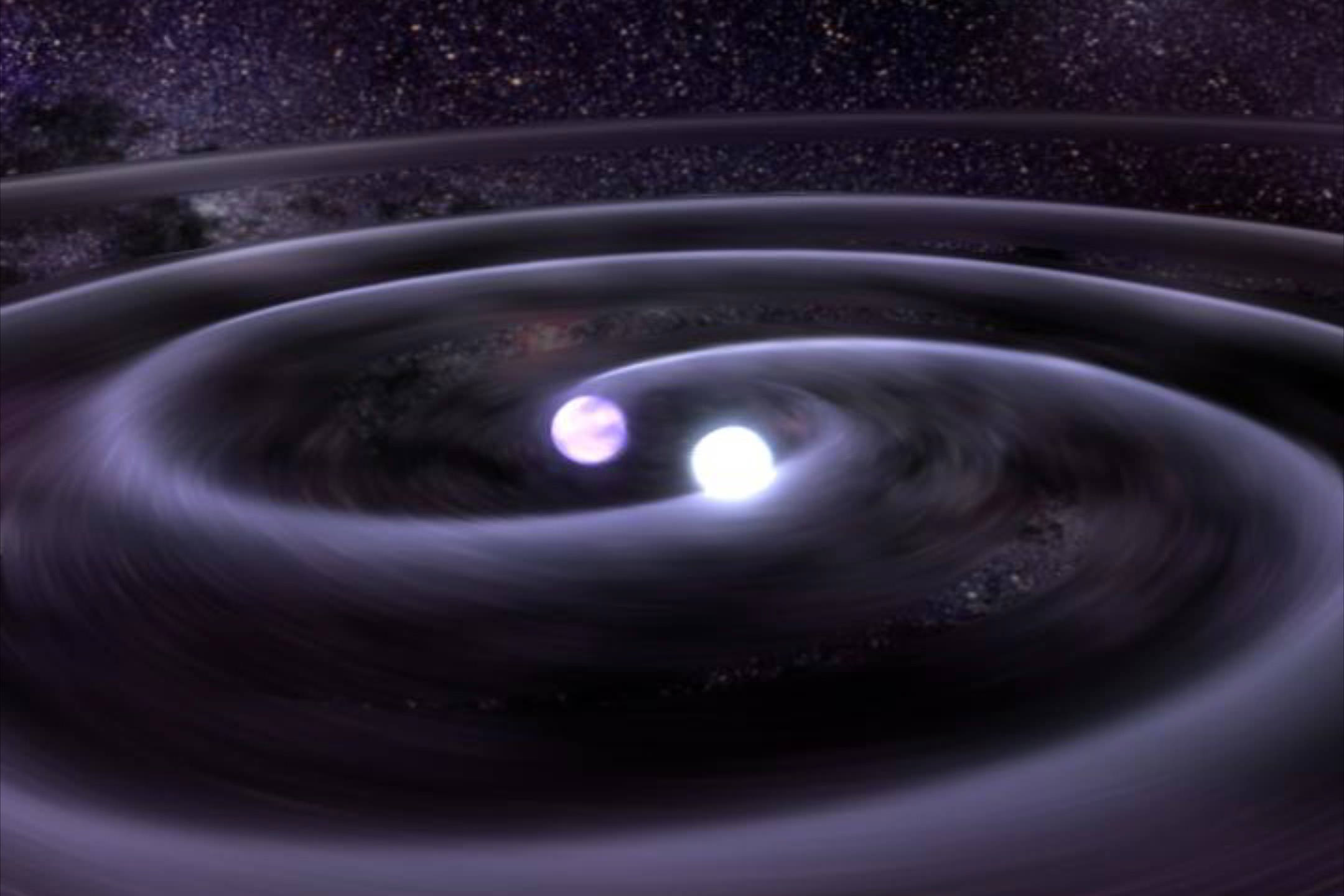[/caption] The only way to know what the Universe was like at the moment of the Big Bang requires analysis of gravitational waves created when the Universe began. Scientists working with the Laser Interferometer Gravitational-Wave Observatory (LIGO) say their initial investigations of these gravitiation waves have turned up nothing. But that's a good thing. Not detecting the waves provides constraints about the initial conditions of the universe, and narrows the field of where we actually do need to look in order to find them.
Much like it produced the cosmic microwave background, the Big Bang is believed to have created a flood of gravitational waves -- ripples in the fabric of space and time. From our current understanding, gravitational waves are the only known form of information that can reach us undistorted from the beginnings of the Universe. They would be observed as a "stochastic" or random background, and would carry with them information about their violent origins and about the nature of gravity that cannot be obtained by conventional astronomical tools. The existence of the waves was predicted by Albert Einstein in 1916 in his general theory of relativity.
Analysis of data taken over a two-year period, from 2005 to 2007, yields that the stochastic background of gravitational waves has not yet been discovered. But the nondiscovery of the background, described in a new paper in the August 20 Nature, offers its own brand of insight into the universe's earliest history.
"Since we have not observed the stochastic background, some of these early-universe models that predict a relatively large stochastic background have been ruled out," said Vuk Mandic, assistant professor at the University of Minnesota and the head of the group that performed the analysis. "We now know a bit more about parameters that describe the evolution of the universe when it was less than one minute old."
According to Mandic, the new findings constrains models of cosmic strings, objects that are proposed to have been left over from the beginning of the universe and subsequently stretched to enormous lengths by the universe's expansion; the strings, some cosmologists say, can form loops that produce gravitational waves as they oscillate, decay, and eventually disappear.
"Since we have not observed the stochastic background, some of these early-universe models that predict a relatively large stochastic background have been ruled out," said Mandic. "If cosmic strings or superstrings exist, their properties must conform with the measurements we made—that is, their properties, such as string tension, are more constrained than before."
This is interesting, he says, "because such strings could also be so-called fundamental strings, appearing in string-theory models. So our measurement also offers a way of probing string-theory models, which is very rare today."
The analysis used data collected from the LIGO interferometers in Hanford, Wash., and Livingston, La. Each of the L-shaped interferometers uses a laser split into two beams that travel back and forth down long interferometer arms. The two beams are used to monitor the difference between the two interferometer arm lengths.
The next phase of the project, called Advanced LIGO, will go online in 2014, and be 10 times more sensitive than the current instrument. It will allow scientists to detect cataclysmic events such as black-hole and neutron-star collisions at 10-times-greater distances.
The Nature paper is entitled "An Upper Limit on the Amplitude of Stochastic Gravitational-Wave Background of Cosmological Origin."
Source:
EurekAlert
 Universe Today
Universe Today
